Scleroderma (overview) Images
Go to article Scleroderma (overview)
Scleroderma, circumscribed. generalized CS. blurred, clearly indurated, light brown, firm plaques without any signs of inflammation that do not move against the lower surface. subjectively, there is a slight feeling of tension.
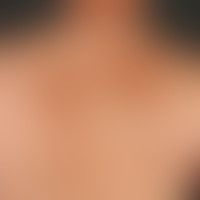
Scleroderma, circumscribed. light brown plaques, differently hardened, frayed at the edges, not movable against the lower surface. no significant signs of inflammation.
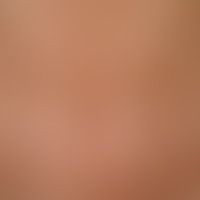
Scleroderma circumscripts: shiny light brown, evenly hardened skin with a slight feeling of tension.

Scleroderma, circumscribed: atrophy of the right leg muscles, atrophy of the gluteal muscles on the right, shortening of the right leg (difference 2.0 cm) with consecutive secondary pelvic obliquity and scoliosis in a 19-year-old female patient; the right knee joint is massively restricted in its movement (extension/flexion 0/25/100).
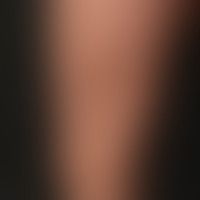
Circumscript scleroderma: Type III profound circumscript scleroderma, deep tissue loss of subcutaneous and adjacent msuculature.
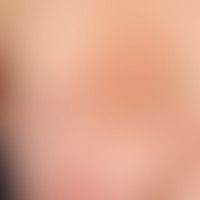
Circumscribed scleroderma: of the type of Atrophodermia idiopathica chronica et progressiva type Pasini-Pierini

Scleroderma (overview): circumscribed scleroderma as an acquired, cutaneous chessboard-like mosaic dermatosis.
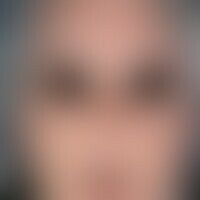
Scleroderma, systemic: taut facial skin, numerous telangiectasias, conspicuous microstomy, pouch mouth.
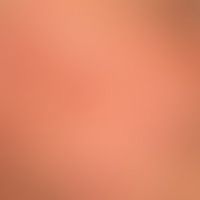
Scleroderma, systemic. Tense facial skin, multiple bizarre telangiectasias.

Scleroderma, systemic, long-standing Raynaud's phenomenon known, now in the winter months more chronic paronychia; permanent scleronychia; since 1 week digital periungual necrosis.

Scleroderma systemic: enormously widened (marked with a black bar) sclerosed cuticle with megacapillaries (vertical arrow); lacunar hemorrhages (horizontal arrow) in the sclerosed cuticle.


